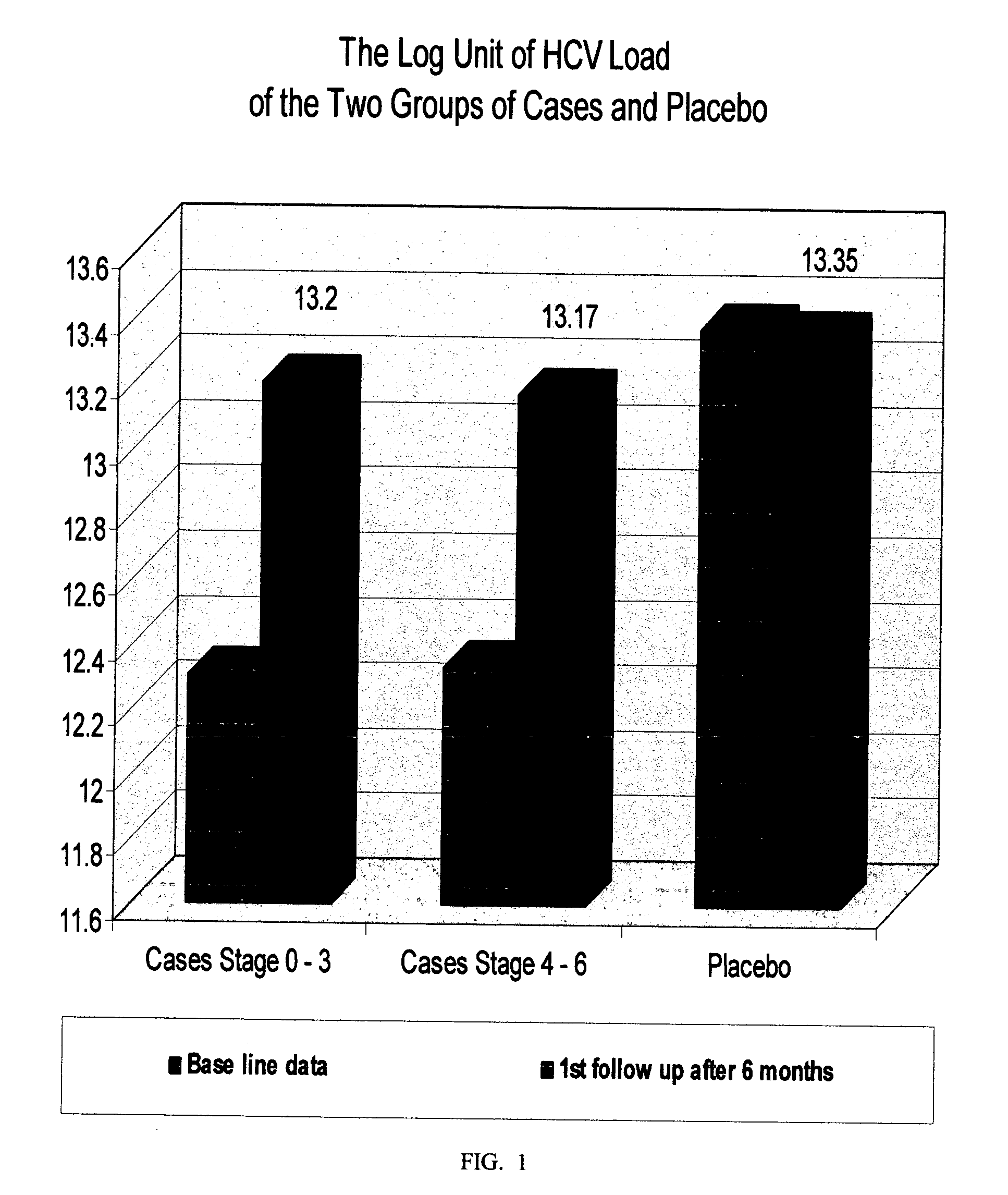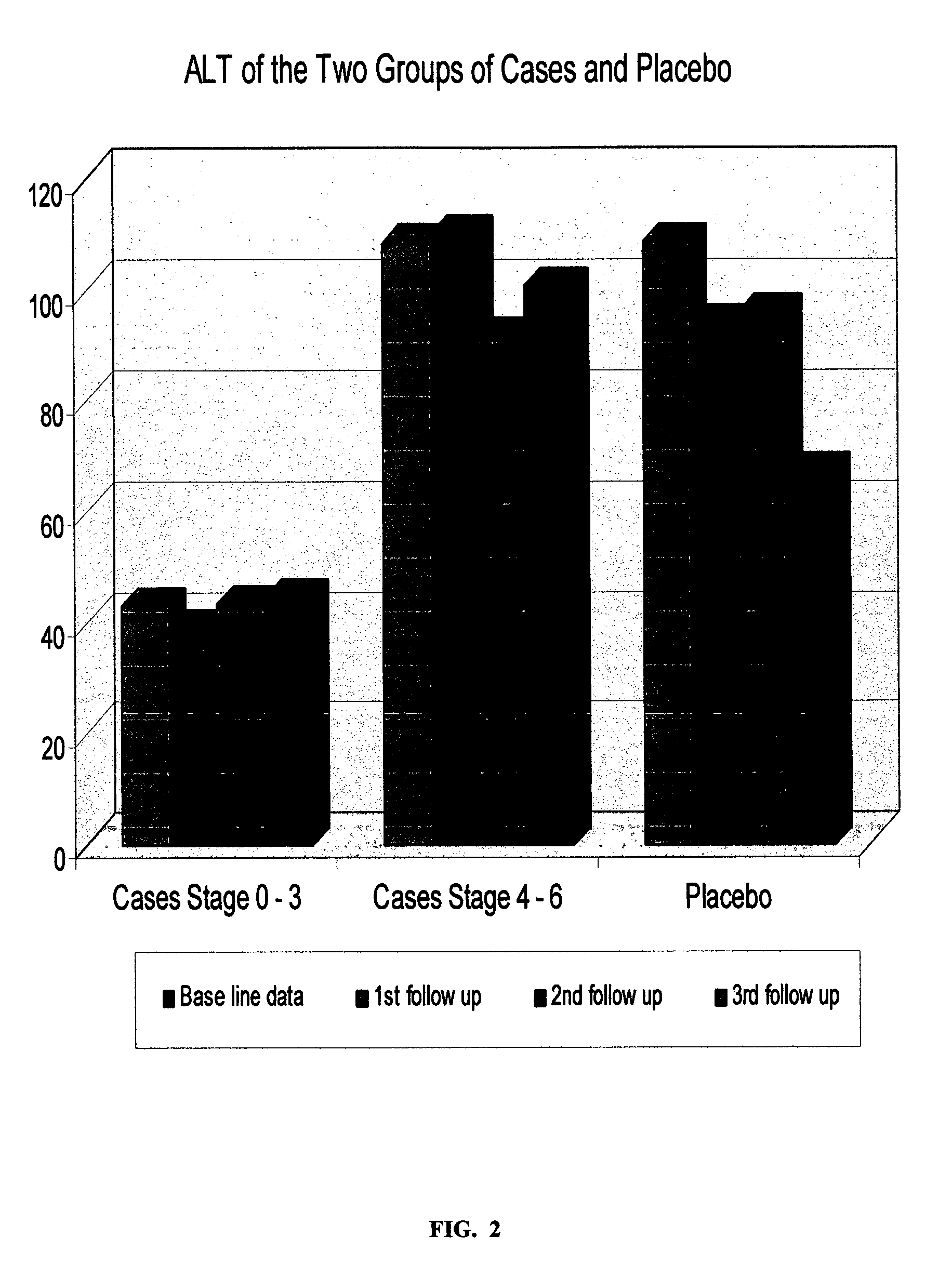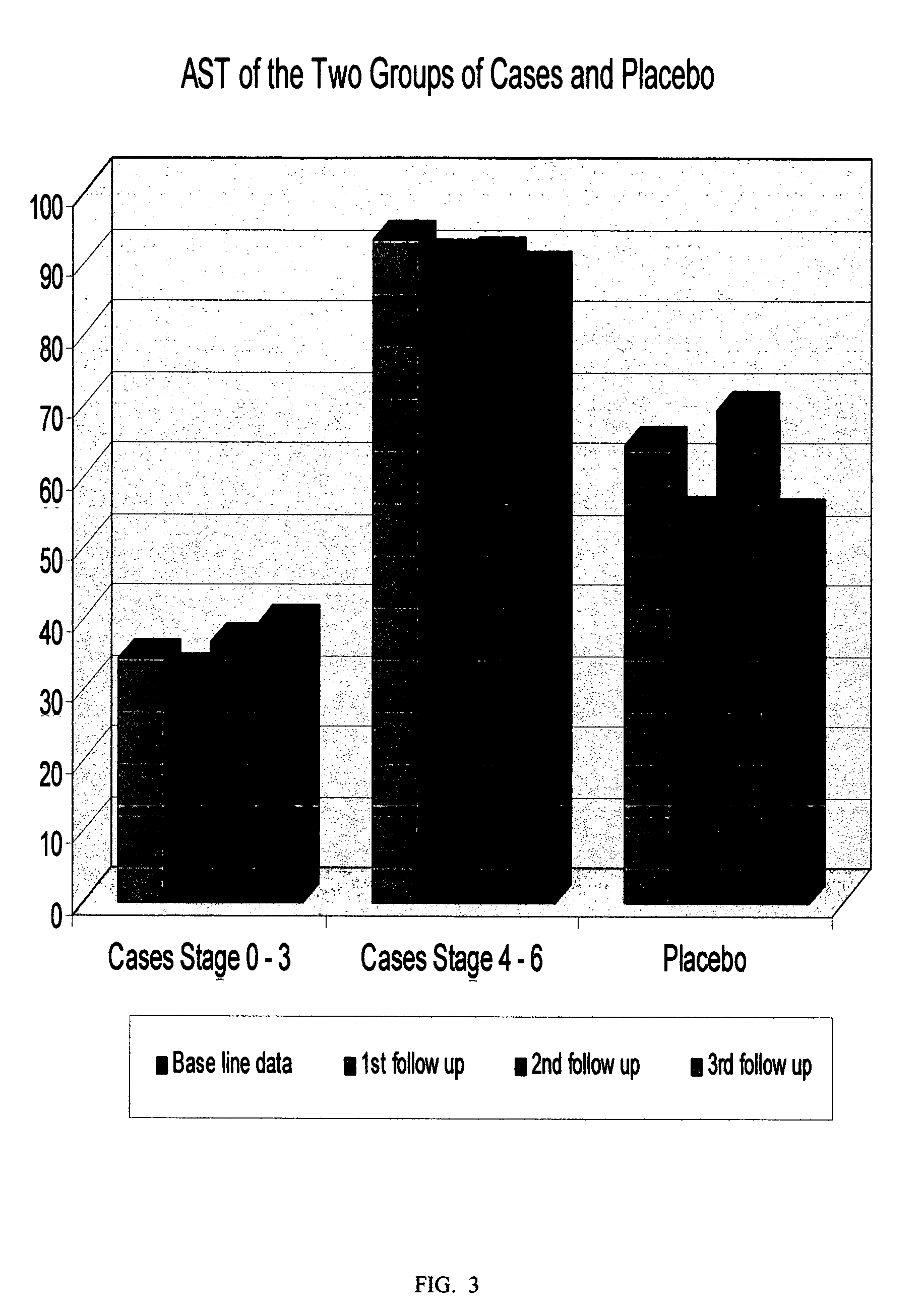Botanical drug compositions for treatments of liver and immunological disorders
a technology of immunological disorders and botanical compositions, applied in the field of medicinal compositions, can solve the problems of unable to achieve effective therapies, unable to meet the needs of patients, so as to increase the number and/or activity, and increase the population of natural killer cells
- Summary
- Abstract
- Description
- Claims
- Application Information
AI Technical Summary
Benefits of technology
Problems solved by technology
Method used
Image
Examples
example 1
[0127] In a preferred embodiment of the invention, the composition of the invention comprises at least one of the botanical plants Actaea rubra, Anemone hepatica, Anemone nemorosa, Nigella sativa, and Ranunculus arvensis, or extracts thereof.
[0128] Although the administration of a composition containing only Anemone hepatica and / or Nigella sativa will be effective in treating hepatic and immunological disorders, the synergism between all the botanicals render the administration of a combination of each botanical plant very desirable.
[0129] The procedures provided herein result in an extract such that the concentration of the extract's medicinal contents yield a sterile preparation that contains not less than 20% weight per volume. In a preferred embodiment, the plant material is treated to increase the surface area. This can be accomplished by grinding, shredding, macerating of leaves flowers, seeds, and stems. Plant material is then extracted in a polar solvent, such as those kno...
example 2
[0130] A sterile preparation for intra-muscular injection of the composition prepared according to Example 1, was evaluated in a clinical study involving fifty one (51) patients infected with chronic hepatitis C virus (CHCV), with clinical stages 0 / 6 to 3 / 6, with Hepatic Activity Index (H.A.I.) ranging from 1 / 18 to 9 / 18, using a randomized placebo controlled protocol. Thirty six (36) patients were randomly selected as the case-group, and fifteen (15) as the placebo-group. The treatment involved a 1-ml intra-muscular injection three times a week, for two periods; period one: twenty four weeks (24) weeks, end period two: forty eight weeks, with evaluations at time zero (to establish a base line), and then at every eight weeks until the end of the study. The following parameters were studied:
[0131] Quantitative-PCR (Quantitative-Polymerase Chain Reaction) This test is used to assess the level of virus in serum. It involves the amplification of the nucleic acid associated with virus se...
example 3
[0148] A sterile preparation for intra-muscular injection of the composition prepared according to Example 1, was evaluated in a clinical study involving thirty eight (38) patients infected with chronic hepatitis C virus (CHCV), with advanced clinical stages 4 / 6 to 6 / 6, i.e. liver cirrhosis, end-stage liver disease, and liver cancer, with a corresponding Hepatic Activity Index (H.A.I.), ranging from 7 / 18 to 13 / 18, using a randomized placebo controlled protocol. Twenty three (23) patients were randomly selected as the case-group and fifteen (15) as the placebo-group. The treatment involved a 1 ml intramuscular injection three times a week for two periods: period one: twenty four (24) weeks, and period two: forty eight (48) weeks, with evaluations at time zero (to establish a base line), and then at every eight weeks until the end of the study. The same parameters as in EXAMLPE 2 were studied, i.e. PCR, ALT, AST, Prothrombin and Albumin, Platelets, total Leukocytes, Hemoglobin, and li...
PUM
 Login to View More
Login to View More Abstract
Description
Claims
Application Information
 Login to View More
Login to View More - R&D
- Intellectual Property
- Life Sciences
- Materials
- Tech Scout
- Unparalleled Data Quality
- Higher Quality Content
- 60% Fewer Hallucinations
Browse by: Latest US Patents, China's latest patents, Technical Efficacy Thesaurus, Application Domain, Technology Topic, Popular Technical Reports.
© 2025 PatSnap. All rights reserved.Legal|Privacy policy|Modern Slavery Act Transparency Statement|Sitemap|About US| Contact US: help@patsnap.com



